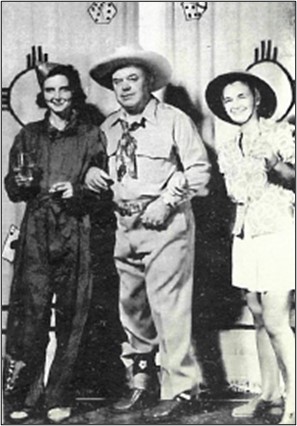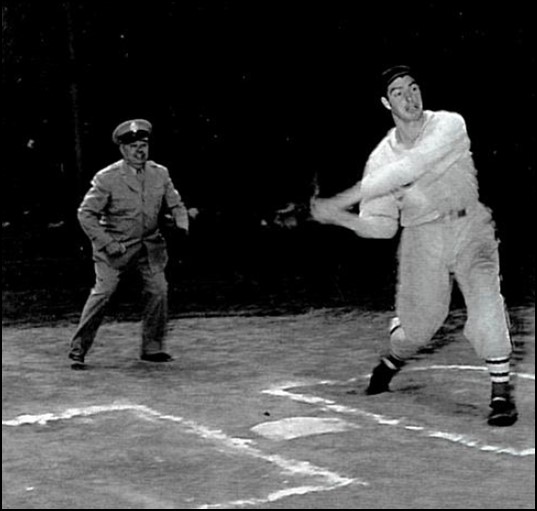KIRTLAND AIR FORCE BASE, N.M. -- In 1941, the U.S. Army began constructing a base adjacent to the Albuquerque Municipal Airport, now the Sunport. With the outbreak of World War II, construction of what was then called Albuquerque Army Air Base advanced rapidly. Within just a few months, 110 buildings were completed, and runways at the airport were extended by 10,000 feet.
With the necessary facilities completed, the base officially commenced bombardier training in December 1941 with the arrival of the 19th Bombardment Group. That same year, the base was renamed Kirtland Field to honor Air Corps pioneer Col. Roy C. Kirtland. The arrival of the 19th Bombardment Group also brought the 4th Air Base Group, along with the base’s first permanent commander, Col. Frank D. Hackett.
“Indoctrination, Training, Morale” was the slogan of The Bombsight, Kirtland Field’s biweekly newsletter, a publication that aimed to foster morale. As a bombardier training base, Kirtland trained Airmen to execute dangerous bombing scenarios, and it was essential they were mentally, physically and emotionally prepared. Indoctrination and training came through their experiences in the military, yet prospective bombardiers faced great anxiety as they prepared for deployment to the Pacific Theater. 
How did they manage that stress? The Bombsight began publishing in January 1942 and included news, editorials, squadron-composed columns, sports, comics and even coverage of the dating scene on base. These publications were Airman-centric and demonstrated that Kirtland Field’s leadership made an intentional effort to boost morale and create an environment that promoted the health and well-being of its service members and their families.
Athletic competitions were a powerful tool for improving morale helping to foster camaraderie, physical fitness and conformity, which were all essential for combat readiness. Officers and enlisted members participated in a range of team sports regularly covered in The Bombsight. A 1943 column by the base Finance Office highlighted the intensity of a bowling tournament against a team from the Inspector General’s office. The Finance team taunted: “The Inspections had better not get too hot ’cause they are liable to get their paychecks lost. Hmm.”
Another column from the 3rd Base Headquarters described a heated baseball game between the 55th and 56th Bombardment Training Squadrons. They playfully suggested a boxing match, “maybe you can settle your differences that way?” In October 1943, the Kirtland Field football team faced the University of New Mexico Lobos in front of 7,000 spectators. That same year, the Kirtland baseball team played against the Santa Ana Army Air Base team before a crowd of 8,000. During the game, Major League Baseball Hall of Famer Joe DiMaggio, stationed at Santa Ana at the time, played center field.
Kirtland Field also hosted teams in basketball, track and field, boxing, bowling, tennis and golf. These competitive events did more than entertain, they physically conditioned men that would serve on the battlefields of Europe and the Pacific. Friendly rivalries built rapport between units and forged strong bonds through teamwork and shared goals. These contests built trust, reliance and cohesion, the same qualities essential in combat.
 Women, including members of the Women’s Army Corps and civilian employees, were also prominently featured in The Bombsight. Several articles introduced them to male service members, fostering what was effectively a dating culture on base. A column titled “Civilian Girl” praised a woman’s contributions to the base and described her as a “beauteous blonde” whose “delightful personality and pleasing appearance do wonders to the morale of her fellow workers.” The article closes with, “She disclosed the fact that she has no serious heartthrobs to take up her time … and now, maybe THAT isn’t a lead for some of you Kirtland Field Wolves.”
Women, including members of the Women’s Army Corps and civilian employees, were also prominently featured in The Bombsight. Several articles introduced them to male service members, fostering what was effectively a dating culture on base. A column titled “Civilian Girl” praised a woman’s contributions to the base and described her as a “beauteous blonde” whose “delightful personality and pleasing appearance do wonders to the morale of her fellow workers.” The article closes with, “She disclosed the fact that she has no serious heartthrobs to take up her time … and now, maybe THAT isn’t a lead for some of you Kirtland Field Wolves.”
Squadron columns also highlighted family matters including marriages and births. Coinciding with the newsletter’s slogan, these personal updates aimed to encourage connection, emotional well-being and a sense of normalcy. While rooted in that era, the belief that fulfilling relationships boost morale remains just as relevant for today’s service members.
It was vital for the Airmen who were preparing to enter the largest conflict in human history to remember what they had back home. Their morale was critical to mission success. In the midst of bombing runs, engine failures and the loss of comrades, drawing on the memories of their time at Kirtland, of community, connection and purpose, could provide the strength they needed to make it back home.
The culture built at Kirtland reflected the American way of life and reminded those in uniform of what they were fighting for.
Commenting on Col. Hackett’s leadership, the October 1943 edition of The Bombsight reported: “Morale is high at Kirtland … Col. Hackett set out deliberately to get it and he keeps it at high pitch, realizing that men who are satisfied will give everything they got to the job to which they are assigned.”
In the military, morale is often built from the top down. Effective leaders understand the importance of allowing their Airmen to relax, have fun and connect with others. Col. Hackett clearly understood that. The message was simple: prepare, complete the mission, then return to your family, a cycle we can all appreciate.